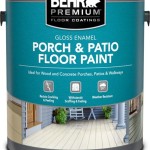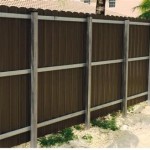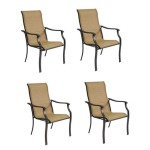Stone Patio Table and Chairs: Durability and Design for Outdoor Living
Stone patio table and chairs represent a significant investment in outdoor living spaces. Characterized by their robust construction and timeless aesthetics, these furniture pieces offer a compelling blend of durability and design versatility. This article will explore the various aspects of stone patio table and chairs, including the different types of stone used, design considerations, maintenance requirements, and factors to consider when making a purchase.
Types of Stone Used in Patio Furniture
The selection of stone greatly influences the overall appearance, durability, and maintenance requirements of a patio table and chair set. Several types of stone are commonly used, each possessing distinct characteristics.
Granite is a popular choice due to its exceptional hardness and resistance to weathering. It is an igneous rock formed from slowly cooling magma, resulting in a dense, granular structure. Granite is highly resistant to scratches, stains, and heat, making it well-suited for outdoor use. The color palette of granite is diverse, ranging from light grays and pinks to dark browns and blacks, often interspersed with flecks of minerals. This variety allows for considerable design flexibility. However, granite can be quite heavy, requiring a sturdy base and careful handling during installation.
Limestone is a sedimentary rock composed primarily of calcium carbonate. It is generally softer than granite and more porous, making it more susceptible to staining and weathering. However, limestone possesses a natural, rustic appeal that is highly desirable for certain outdoor settings. Its color tends to be lighter, ranging from beige and cream to light gray. Limestone requires sealing to prevent staining and regular cleaning to maintain its appearance. Different types of limestone, such as travertine, exhibit unique veining and textures, further enhancing their aesthetic appeal.
Slate is a metamorphic rock formed from shale or mudstone. It is known for its distinctive layered structure and dark, often bluish-gray color. Slate is relatively durable and resistant to water, making it a good choice for outdoor furniture. It can be easily cleaved into thin, flat slabs, making it a versatile material for tabletops and chair seats. Slate can also be honed to a smooth, matte finish, enhancing its tactile qualities. While generally durable, slate can be susceptible to chipping and cracking if subjected to excessive impact.
Concrete, while not a naturally occurring stone, is frequently used as a substitute due to its versatility and cost-effectiveness. Concrete can be molded into various shapes and sizes, allowing for greater design flexibility. It can also be stained or pigmented to achieve a wide range of colors and finishes. Precast concrete is a popular option for patio furniture, offering a durable and relatively lightweight alternative to natural stone. However, concrete is porous and requires sealing to prevent staining and water damage. Reinforced concrete, incorporating steel or other reinforcing materials, provides increased strength and durability.
The selection of the appropriate stone depends on factors such as the desired aesthetic, budget constraints, and anticipated environmental conditions. Careful consideration should be given to the inherent properties of each stone type to ensure long-term performance and satisfaction.
Design Considerations for Stone Patio Table and Chairs
The design of stone patio table and chairs plays a crucial role in their functionality and aesthetic appeal. Beyond the selection of stone, factors such as size, shape, style, and accompanying materials must be carefully considered.
The size of the table and chairs should be proportionate to the size of the patio or outdoor space. A large table in a small space can feel overwhelming, while a small table in a large space may appear insignificant. Consider the number of people who will typically be using the furniture and choose a table size that comfortably accommodates them. The height of the chairs should be appropriate for the table height, allowing for comfortable dining or conversation. Armrests can enhance comfort but may also take up more space.
The shape of the table can significantly impact the overall design. Round tables promote conversation and create a more intimate atmosphere, while rectangular tables are better suited for formal dining. Square tables offer a balance between intimacy and formality. The edges of the table should be smooth and rounded to prevent accidental bumps and scrapes. Chamfered or beveled edges can add a touch of elegance. The shape of the chair backs and seats should be ergonomically designed to provide optimal comfort.
The style of the stone patio table and chairs should complement the existing architectural style of the home and the overall landscaping of the outdoor space. Rustic styles often feature rough-hewn stone and natural finishes, while contemporary styles may incorporate sleek lines and polished surfaces. Traditional styles may feature ornate carvings and decorative details. The choice of style should reflect personal preferences and create a cohesive and harmonious outdoor environment.
Accompanying materials, such as metal or wood, can be used to enhance the design of stone patio table and chairs. Metal bases and frames can provide structural support and add a touch of modern elegance. Wood accents, such as chair arms or backrests, can add warmth and texture. The choice of materials should be carefully considered to ensure compatibility with the stone and the overall design aesthetic. Stainless steel is a popular choice for metal accents due to its corrosion resistance. Teak is a durable and weather-resistant wood that is often used for outdoor furniture.
The overall design of the stone patio table and chairs should prioritize both functionality and aesthetics. Careful consideration should be given to size, shape, style, and accompanying materials to create a comfortable, inviting, and visually appealing outdoor living space.
Maintenance and Care of Stone Patio Furniture
Proper maintenance and care are essential to preserve the beauty and longevity of stone patio table and chairs. The specific maintenance requirements will vary depending on the type of stone used and the environmental conditions to which the furniture is exposed.
Regular cleaning is crucial to remove dirt, dust, and debris that can accumulate on the surface of the stone. A soft brush or cloth and mild soap and water are typically sufficient for routine cleaning. Avoid using harsh chemicals or abrasive cleaners, as these can damage the stone's surface. For stubborn stains, a specialized stone cleaner may be necessary. Always test the cleaner in an inconspicuous area first to ensure that it does not cause discoloration or damage.
Sealing is recommended for porous stones such as limestone and concrete to prevent staining and water damage. A penetrating sealer will help to repel liquids and protect the stone from absorbing stains. The frequency of sealing will depend on the type of sealer used and the level of exposure to the elements. Generally, resealing is recommended every one to three years. Before applying a sealer, thoroughly clean the stone and allow it to dry completely.
Protection from the elements can help to prolong the life of stone patio furniture. In harsh climates, covering the furniture during the off-season can protect it from snow, ice, and extreme temperatures. Using patio furniture covers can also help to prevent fading and discoloration caused by prolonged exposure to sunlight. If covering is not feasible, consider storing the furniture in a garage or shed during the winter months.
Preventing scratches and chips is important to maintain the appearance of stone patio furniture. Avoid dragging heavy objects across the surface of the stone, as this can cause scratches. Use coasters and placemats to protect the table from spills and heat. If a chip or crack does occur, it can often be repaired using a stone repair kit. Consult with a professional stone restoration specialist for more significant damage.
Addressing algae and moss growth is necessary for outdoor stone furniture, especially in humid environments. These can be carefully removed using a solution of water and bleach, followed by thorough rinsing. Preventative measures like ensuring proper drainage and increasing sunlight exposure can help to minimize future growth.
By following these maintenance and care guidelines, owners can ensure that their stone patio table and chairs remain beautiful and functional for many years to come. Regular cleaning, sealing, protection from the elements, and prompt repair of any damage are essential for preserving the investment in these durable and elegant outdoor furniture pieces.

High Value Added Outdoor Rope Weaving Patio Chairs With Round Sintered Stone Top Garden Table Furniture Set Made In Com

Fashionable Outdoor Rope Weaving Patio Chair With Sintered Stone Top Garden Table Furniture Set Made In Com

Stone Garden Furniture

Outdoor Stone Top Square Dining Table 8 Seats The Introduction Of Its Latest Luxury Aluminium Furniture Set Sets

White Stone Garden Bench Table Set

Stone Harbor 9 Piece Dining Set 48 X 84 127 Extension Weave Table And 8 Chairs Laura S Home Patio

Outdoor Garden Hand Carved Natural Stone Granite Round Table Chairs Sets For Park Furniture Set Hotel Made In Com

Stone Patio Tables Ideas Outdoor Dining Set Table

Natural Stone Garden Bench Table Set For Seating Purpose Without Back

Natural Garden Dining Table Set








